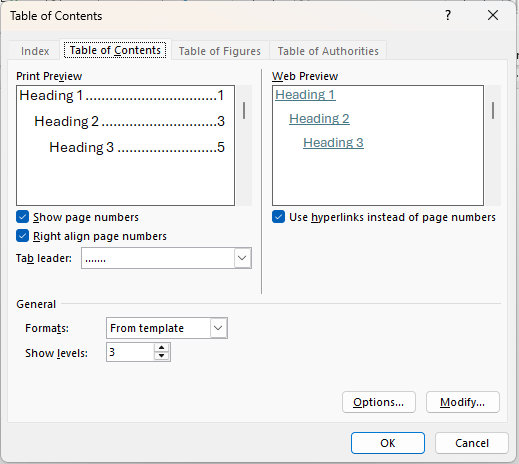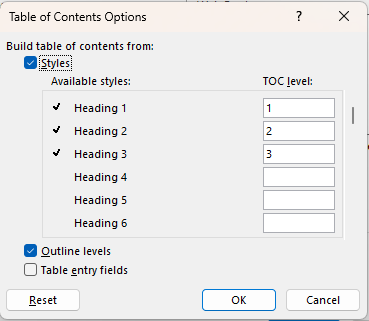Table of contents
In this article:
- Using a table of contents in Word
- Inserting a table of contents
- Automated table of contents
- Manual table of contents
- Custom table of contents
- Deleting a table of contents
- Updating a table of contents
Using a table of contents in Word
A table of contents (TOC) in Word lists headings in the document much like you'd find in a book or long form publication like a report. By default the headings in a TOC are also hyperlinks which will take you directly to the location of a heading when you hold down Ctrl and click on one.
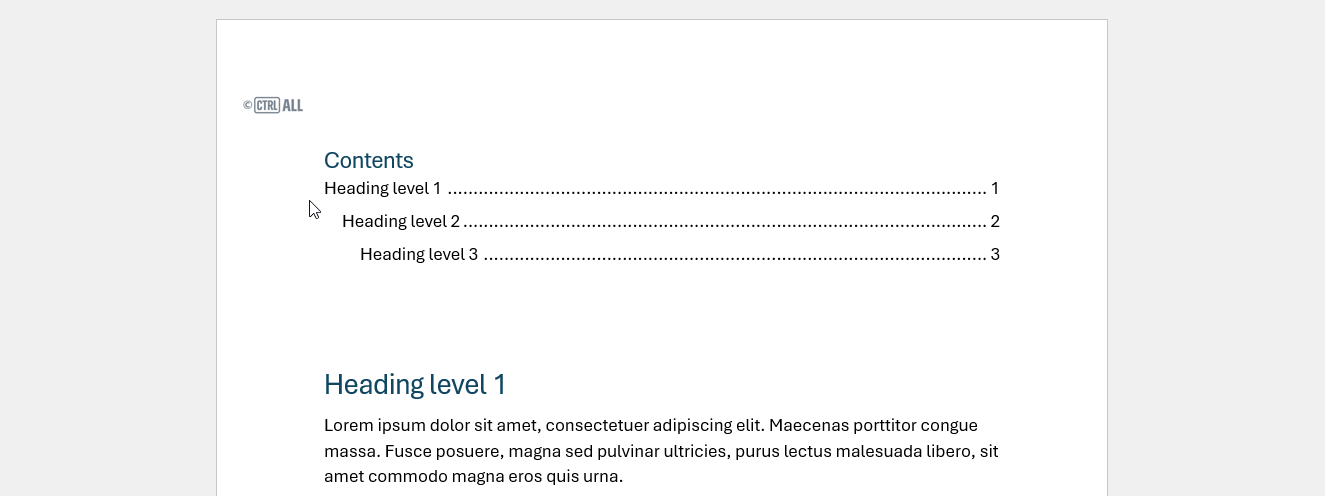
Inserting a table of contents
Go to References and then select the Table of Contents drop down. From there you can choose which style of TOC to insert.
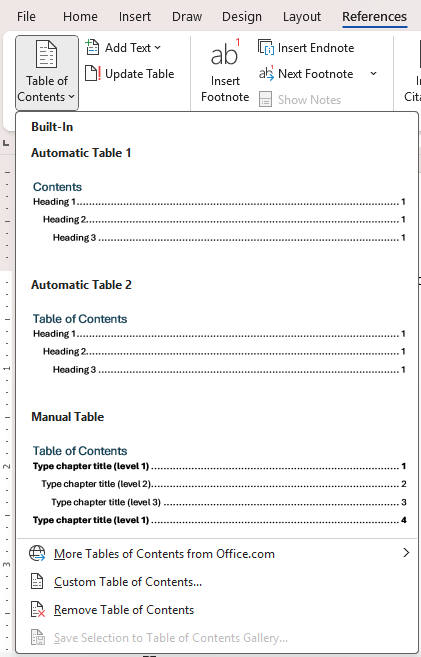
Automated table of contents
Automated table of contents styles 1 and 2 require you to have headings, or more specifically heading styles, in place in your document. If you insert one of these without headings it will insert a blank TOC with a warning:
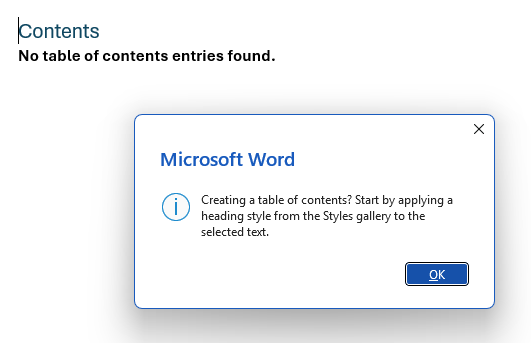
A note on automated heading levels
When you have a document with several heading levels, one point that catches a lot of people out is that a TOC only includes the top three default heading styles i.e. Heading 1, Heading 2 and Heading 3. Take this example with four heading levels:

If we add an automated table of contents to this document we get this:

Note how heading level 4 isn't included, no other level after 3 is; the reason behind this is to prevent the TOC becoming too granular and long. Typically a table of contents is to help readers get to main sections of a document/publication.
Manual table of contents
The manual style lets you enter in your own headings and page numbers into the TOC irrespective of what actual headings you have in your document. These can be useful for short or non-structured documents with custom layouts where the content is minimal and/or doesn't rely on headings so much, such as a program, brochure or booklet, a portfolio or a one-page newsletter for example.

Be careful to make sure your custom headings match up correctly with your content. That goes for the page numbering too as it's all manual. The manual option can be quite labour-intensive, especially with the indentation of the different levels; you may want to add custom tab stops for the different levels.
Custom table of contents
You can select Custom Table of Contents at the bottom of the drop down which provides options a TOC's style and layout.
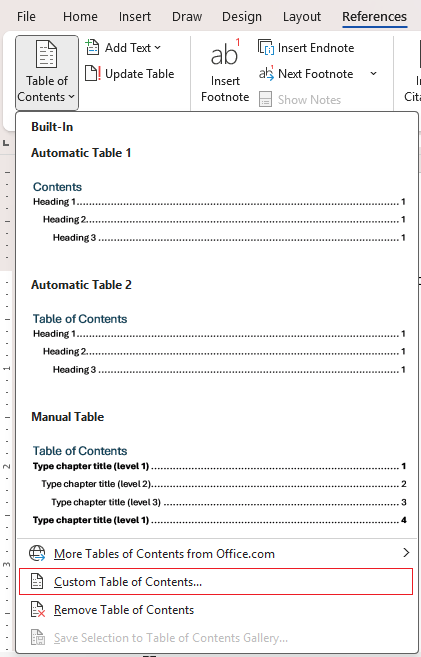
You'll be presented with this window with multiple options to customise your table of contents.
Table entry fields
They are a legacy option but if you need to add in something custom to a table of contents then you can set content to have a TC field. To insert a TC field directly:
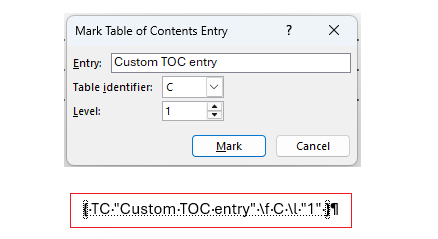
- Press Alt + Shift + O which brings up the the Mark table of Contents Entry dialog.
- Decide on entry text to appear in the TOC.
- If necessary choose the Table identifier, the default for a single TOC is 'C'. It's possible to assign to a different custom TOC with a different identifier letter, e.g. a TOC for appendices.
- Choose a TOC level.
- Click Mark to apply. Formatting marks will then appear showing you the TC field code.
Here's an example where I've selected the text beforehand which then becomes the text to include in the TOC:
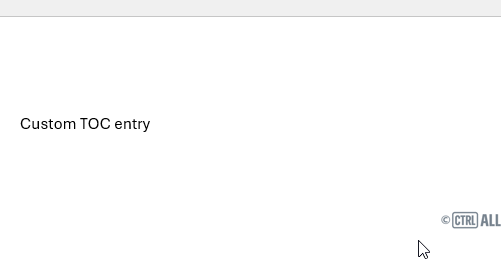
Once inserted, update the custom TOC to include the new TC field.
Modify...
Modify allows you to change the formatting of the 'TOC' styles, for each TOC level you can customise the font, indentation, leader dots, and spacing.
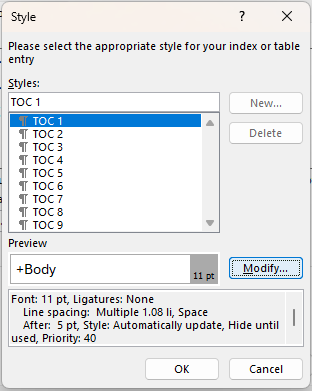
Deleting a table of contents
Either go to References > Table of contents > Remove table of contents or delete the TOC on the page manually with backspace or delete.
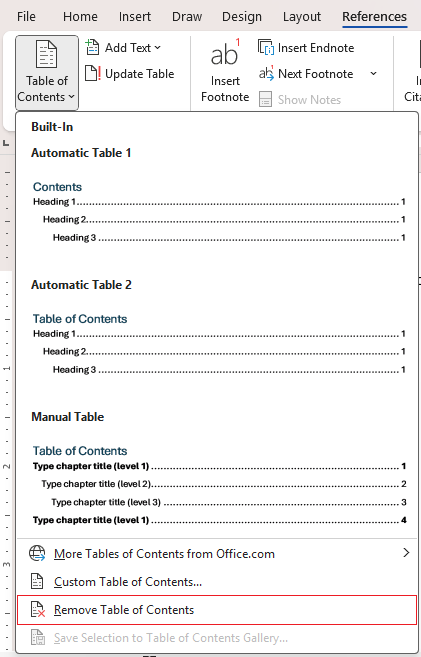
Updating a table of contents
To come
